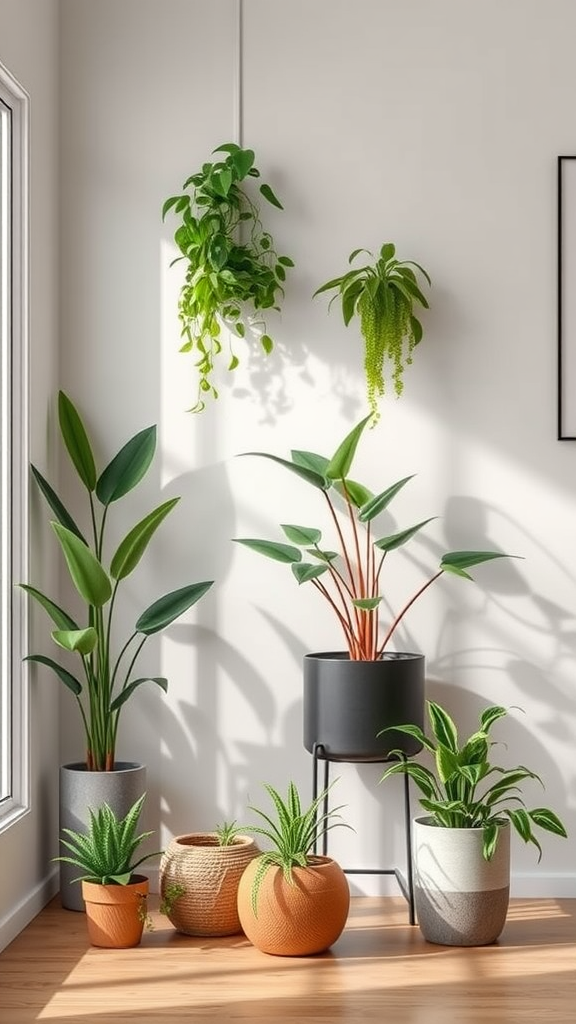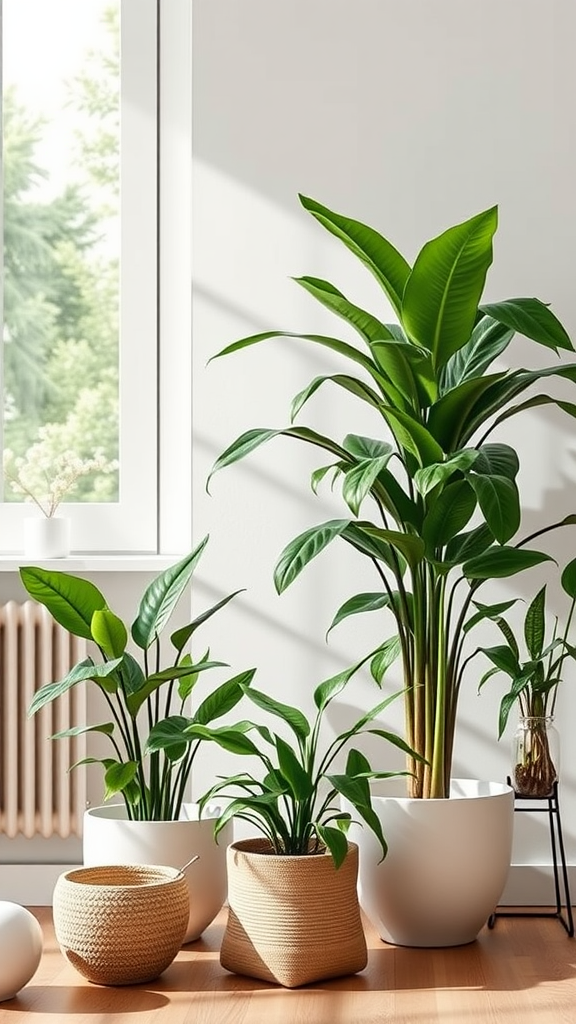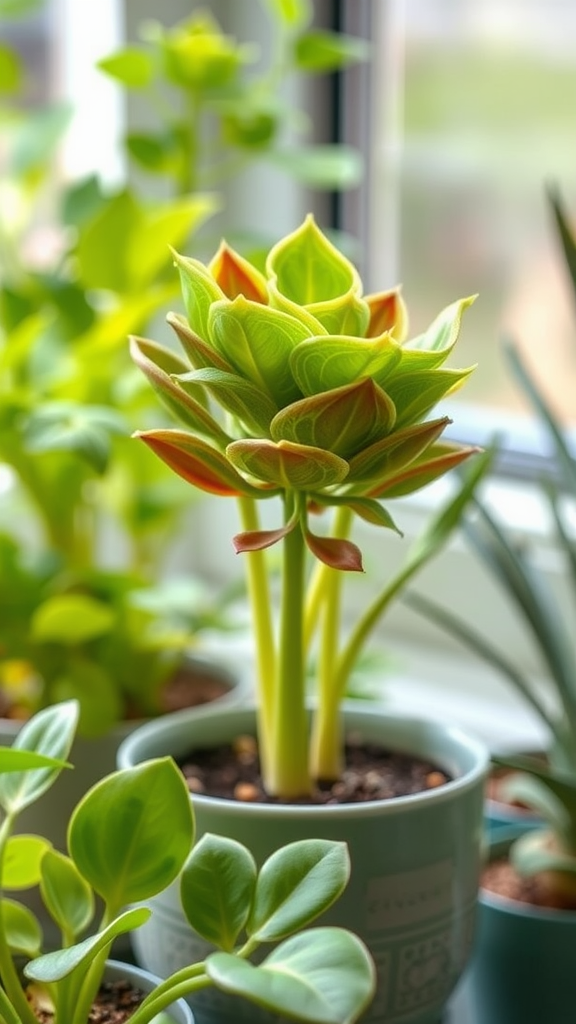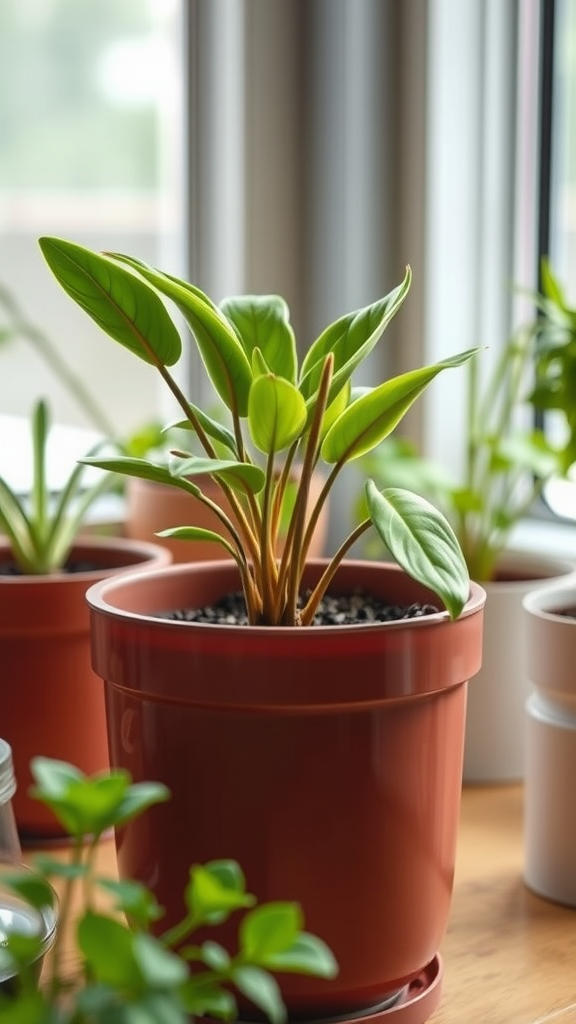Creative Ways to Incorporate Plants into Your Eco-Friendly Home
Creating an eco-friendly home using plants is a wonderful way to enhance your living space while promoting sustainability. plants into your home helps improve air quality and adds a touch of natural beauty. Here are some creative ideas for integrating plants into your eco-friendly home.
1. Indoor Vertical Gardens
Transform a plain wall into a living masterpiece. Vertical gardens use less space and can be tailored to fit your style. You can choose a selection of herbs, succulents, or even flowers to create a stunning green display that enhances your interior. Many DIY kits are available, or you can make one from wall-mounted pockets or grids.
2. Air-Purifying Plants
Enhance air quality by introducing air-purifying plants. Varieties like spider plants, pothos, and snake plants do an excellent job of filtering toxins while being low-maintenance. Placing a few of these around your home can lead to fresher air, making it a healthier environment for you and your family.
3. Herb Garden in the Kitchen
Bring the outdoors into your kitchen by growing herbs on a windowsill. Not only will they provide fresh ingredients for your meals, but they also look lovely and smell wonderful. Common choices include basil, rosemary, and mint. This is an easy and delicious way to practice sustainability.
4. Macramé Plant Hangers
Add a bohemian touch to your home with macramé plant hangers. Hang them in your kitchen, living room, or even in the bathroom. Plant hangers free up counter space and create visual interest. Choose colorful, decorative pots to complement your interior design.
5. Repurposed Furniture for Plant Display
Give old furniture a new life by turning it into a plant display. Use an old ladder, a bookshelf, or even a wooden crate to showcase your plants. This not only eliminates waste but also adds a unique charm to your home.
6. Natural Room Dividers
Use tall plants like fiddle leaf figs or bamboo as natural room dividers. They create privacy without blocking light and contribute to a more tranquil environment. This is an ideal strategy for open-concept spaces, adding greenery while maintaining an airy feel.
7. Terrariums
Craft a mini-ecosystem with glass terrariums. They are perfect for small homes or apartments and require minimal maintenance. You can select a variety of small plants, stones, and soil to create a beautiful, self-sustaining display that serves as a unique conversation starter.
8. Green Roofs
If you’re considering a larger project, think about installing a green roof. This practice reduces energy costs and improves insulation while providing a habitat for wildlife. Make sure to consult a professional to understand the requirements for your particular structure.
9. Plant-Based Wall Art
Get creative with plant-based wall art. Use preserved moss, dried flowers, or even plant prints to add a touch of nature to your walls. This artistic approach allows you to express your style while keeping the eco-friendly theme intact.
10. Outdoor Living Spaces
Design outdoor living spaces by incorporating potted plants, hanging baskets, and vertical gardens. Create a relaxing atmosphere on your patio or balcony with a combination of colorful flowers and lush foliage. Spending time outside surrounded by plants can also boost your mood.
11. Natural Fragrance with Plants
Replace synthetic air fresheners with fragrant plants. Lavender, jasmine, and citrus-scented plants can naturally freshen the air in your home. Placing them near windows or doors will not only enhance their scent but also invite beautiful butterflies and bees into your garden.
12. Customize Your Plants’ Potting
Choose eco-friendly pots made from recyclable or biodegradable materials to pot your plants. You can also paint old pots to give them a new look, turning a simple task into a creative activity. This small detail can add a touch of personal flair while keeping your eco-friendly goals intact.
13. Seasonal Plants
Change your indoor plants as the seasons shift. Incorporate seasonal flowers that reflect the time of year, such as poinsettias during winter or sunflowers in summer. This keeps your space feeling fresh and connected to the changing environment around you.
14. DIY Plant Gifts
Share the joy of plants by gifting them to friends and family. Put together small potted plants in decorative containers for a thoughtful gift that also spreads eco-consciousness. It’s an excellent way to encourage others to consider their own eco-friendly practices.
15. Community Gardening
Consider participating in community gardening projects. Working with neighbors to cultivate green spaces can provide fresh produce, foster connections, and contribute positively to local biodiversity. This is not only beneficial for the environment but also strengthens community ties.
By incorporating these creative eco-friendly home ideas using plants, you can create a harmonious living space that is both beautiful and sustainable. Embracing the natural world around you can lead to a healthier lifestyle and a greater appreciation for the environment.
The Benefits of Using Plants for Indoor Air Quality and Aesthetics
Plants into your indoor space not only boosts aesthetics but also enhances air quality. Many of us spend a majority of our time indoors, often inhaling air contaminated with various pollutants. By placing plants around your home, you can create a healthier and more inviting atmosphere. Here are some remarkable benefits of using plants for indoor air quality and aesthetics.
Enhancing Air Quality
Plants play a crucial role in filtering indoor air. They absorb carbon dioxide and release oxygen through photosynthesis, significantly improving air quality. Here are a few specific ways plants contribute to cleaner air:
- Removing Toxins: Many common household items release harmful substances like formaldehyde and benzene into the air. Certain plants, such as peace lilies and spider plants, can absorb these toxins, making your indoor environment much safer.
- Increasing Humidity: Plants release moisture into the air through a process called transpiration. This increase in humidity can help soothe dry skin and respiratory issues, especially in winter months when indoor air tends to be dry.
- Reducing Carbon Dioxide Levels: Plants absorb carbon dioxide, a common air pollutant. By lowering CO2 levels, plants help combat fatigue and improve focus and energy levels.
Enhancing Aesthetics
Aside from the numerous air quality benefits, plants can dramatically enhance the visual appeal of any living space. Here’s how they add value to your home:
- Adding Color and Texture: Indoor plants range from vibrant flowers to lush green leaves, providing a burst of color and adding texture to your home décor. This vibrancy can make your living space feel more lively and inviting.
- Creating Focal Points: Arranging plants strategically can create beautiful focal points in any room. For instance, a large fiddle leaf fig can serve as an eye-catching centerpiece in a corner, drawing attention and complementing your overall design theme.
- Improving Mood and Well-Being: Studies have shown that being around plants can improve your mood and reduce stress. greenery into your home can create a sense of calm and peace, making your space more enjoyable to inhabit.
Improving Focus and Productivity
Another significant benefit of having plants indoors is their ability to enhance focus and productivity. Research indicates that people who work around plants feel more engaged and motivated. Benefits include:
- Boosting Creativity: Being in an environment with greenery can spark creativity, helping you think more clearly and outside the box.
- Enhancing Concentration: Plants can reduce distractions. The presence of greenery may help you concentrate better, whether studying for an exam or working remotely.
- Lowering Stress: A calmer workspace leads to less stress. Being around plants is known to lower blood pressure, aiding in stress relief.
Choosing the Right Plants
When selecting plants for your indoor space, consider the following options that are known for their air-purifying qualities:
- Spider Plant: This hardy plant is great for beginners and effectively removes harmful toxins.
- Pothos: Easy to care for, pothos thrives in various lighting and helps purify the air.
- Areca Palm: A beautiful palm that not only looks great but also works as a natural humidifier.
- Boston Fern: Known for its air-purifying qualities, this lush plant also adds texture to any space.
To enjoy the maximum benefits, it’s best to place several plants of various sizes and types throughout your home. This will ensure that you reap both air quality improvements and aesthetic enhancements simultaneously. Remember that each plant has its specific light and water requirements, so be sure to cater to their needs accordingly.
Plants into your indoor environment is a simple yet effective strategy to enhance both air quality and aesthetics. With countless options available, there is sure to be a perfect plant for every room in your home. Start adding greenery today to create a healthier and more beautiful living space!
Conclusion
Transforming your home into an eco-friendly sanctuary enriched with plants offers a multitude of rewards. By creatively incorporating greenery in various forms—be it through vertical gardens, hanging planters, or even plant shelves—you not only enhance your living space aesthetically but also embrace a sustainable lifestyle. The artistic placement of plants can serve as a beautiful focal point in any room, adding color, texture, and life to your home.
Moreover, the benefits of using plants go beyond decoration. They play a crucial role in improving indoor air quality by filtering out toxins and releasing oxygen. Certain plants are especially effective at purifying the air, making your home healthier for you and your loved ones. plants into your daily environment can create a calming atmosphere, reducing stress and elevating your mood.
As you explore these eco-friendly home ideas using plants, consider how they can be tailored to fit your lifestyle. From selecting low-maintenance species to curating a diverse indoor jungle, the possibilities are endless. Not only will you beautify your surroundings, but you’ll also contribute to a more sustainable future. So go ahead, let nature inspire your home, and enjoy the multitude of benefits that come from integrating plants into your everyday life. Every small change you make can have a significant impact on both your health and the planet. Embrace the green revolution in your home, and watch it flourish!





